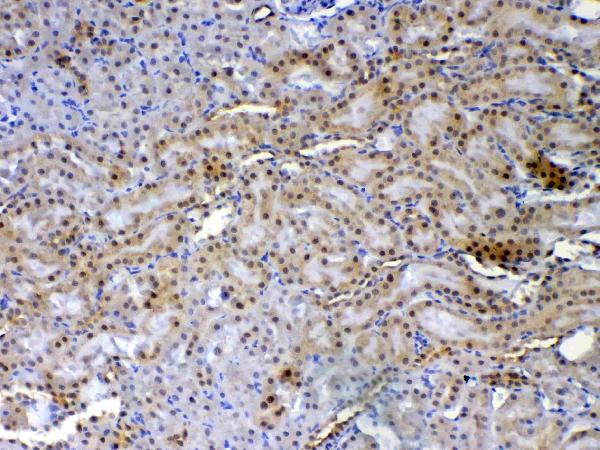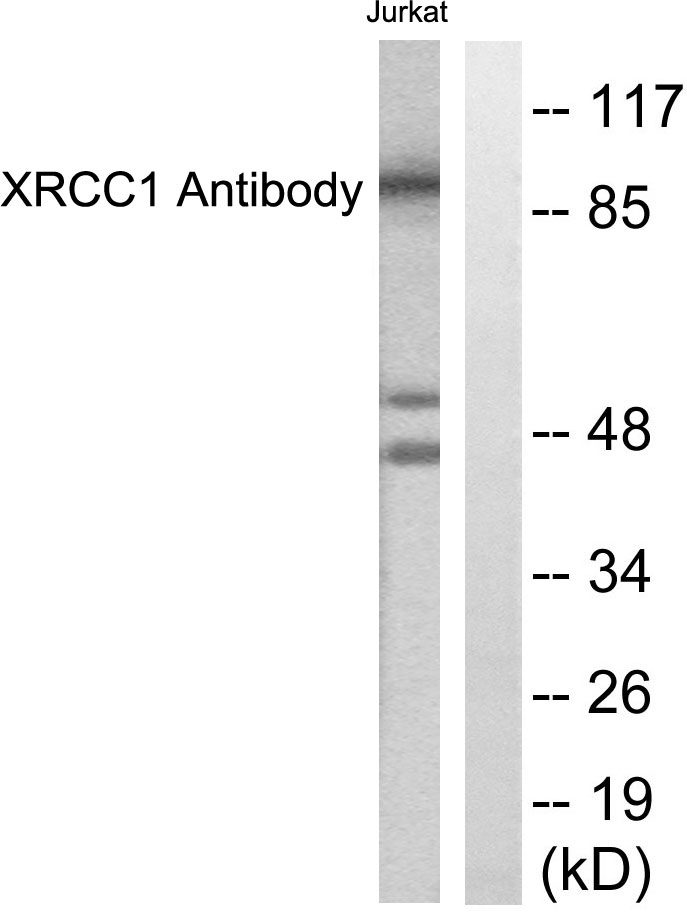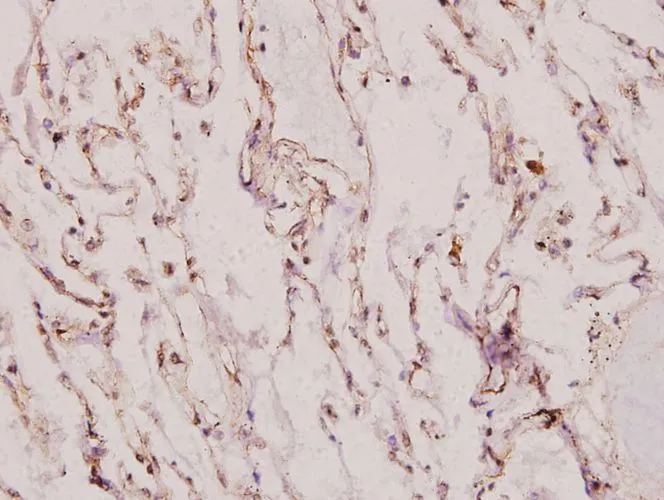XRCC1 antibody [N1N3]
GTX111712
ApplicationsImmunoFluorescence, Western Blot, ImmunoCytoChemistry, ImmunoHistoChemistry, ImmunoHistoChemistry Paraffin
Product group Antibodies
TargetXRCC1
Overview
- SupplierGeneTex
- Product NameXRCC1 antibody [N1N3]
- Delivery Days Customer9
- Application Supplier NoteWB: 1:500-1:3000. ICC/IF: 1:100-1:1000. IHC-P: 1:100-1:1000. *Optimal dilutions/concentrations should be determined by the researcher.Not tested in other applications.
- ApplicationsImmunoFluorescence, Western Blot, ImmunoCytoChemistry, ImmunoHistoChemistry, ImmunoHistoChemistry Paraffin
- CertificationResearch Use Only
- ClonalityPolyclonal
- Concentration0.73 mg/ml
- ConjugateUnconjugated
- Gene ID7515
- Target nameXRCC1
- Target descriptionX-ray repair cross complementing 1
- Target synonymsRCC, SCAR26, DNA repair protein XRCC1, X-ray repair complementing defective repair in Chinese hamster cells 1, X-ray repair cross-complementing protein 1
- HostRabbit
- IsotypeIgG
- Protein IDP18887
- Protein NameDNA repair protein XRCC1
- Scientific DescriptionThe protein encoded by this gene is involved in the efficient repair of DNA single-strand breaks formed by exposure to ionizing radiation and alkylating agents. This protein interacts with DNA ligase III, polymerase beta and poly (ADP-ribose) polymerase to participate in the base excision repair pathway. It may play a role in DNA processing during meiogenesis and recombination in germ cells. A rare microsatellite polymorphism in this gene is associated with cancer in patients of varying radiosensitivity. [provided by RefSeq]
- Storage Instruction-20°C or -80°C,2°C to 8°C
- UNSPSC12352203
References
- Chen SH, Yu X. Targeting dePARylation selectively suppresses DNA repair-defective and PARP inhibitor-resistant malignancies. Sci Adv. 2019,5(4):eaav4340. doi: 10.1126/sciadv.aav4340Read this paper
- Valdez BC, Li Y, Murray D, et al. The PARP inhibitor olaparib enhances the cytotoxicity of combined gemcitabine, busulfan and melphalan in lymphoma cells. Leuk Lymphoma. 2017,58(11):2705-2716. doi: 10.1080/10428194.2017.1306647Read this paper
- Chakraborty A, Tapryal N, Venkova T, et al. Classical non-homologous end-joining pathway utilizes nascent RNA for error-free double-strand break repair of transcribed genes. Nat Commun. 2016,7:13049. doi: 10.1038/ncomms13049Read this paper





![WB analysis of various cell lines using GTX83410 XRCC1 antibody [2G8]. Loading : 10 ug per lane Dilution : 1:200](https://www.genetex.com/upload/website/prouct_img/normal/GTX83410/GTX83410_3602_WB_w_23061419_987.webp)
![FACS analysis of HEK293T cells transfected with either XRCC1 plasmid(Red) or empty vector control plasmid(Blue) using GTX83411 XRCC1 antibody [2D8].](https://www.genetex.com/upload/website/prouct_img/normal/GTX83411/GTX83411_10_FACS_w_23061419_991.webp)
![IHC-P analysis of human testis tissue using GTX21838 XRCC1 antibody [33-2-5].](https://www.genetex.com/upload/website/prouct_img/normal/GTX21838/GTX21838_20191203_IHC-P_90_w_23060620_921.webp)